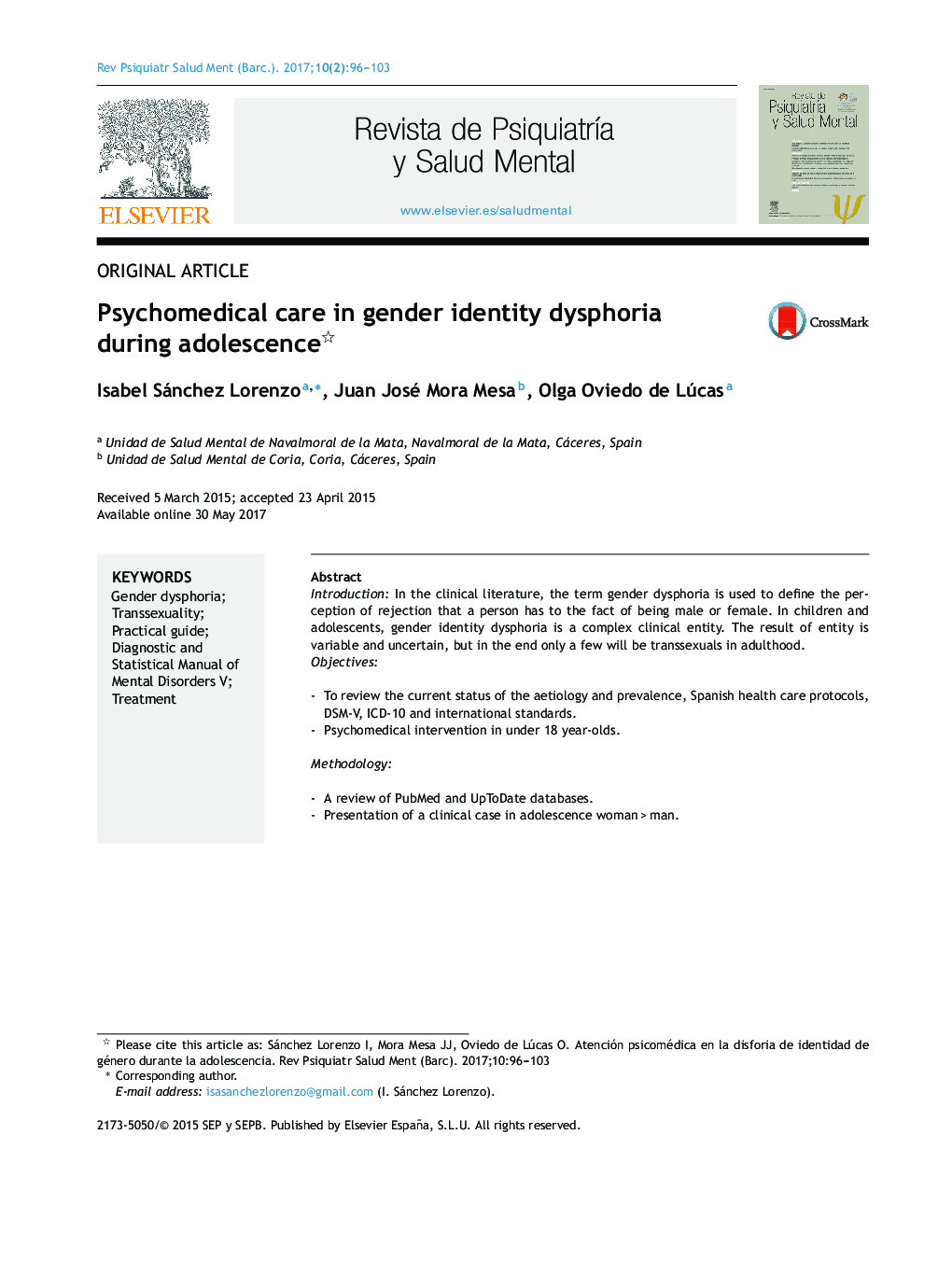| Article ID | Journal | Published Year | Pages | File Type |
|---|---|---|---|---|
| 8816365 | Revista de Psiquiatría y Salud Mental (English Edition) | 2017 | 8 Pages |
Abstract
IntroductionIn the clinical literature, the term gender dysphoria is used to define the perception of rejection that a person has to the fact of being male or female. In children and adolescents, gender identity dysphoria is a complex clinical entity. The result of entity is variable and uncertain, but in the end only a few will be transsexuals in adulthood.Objectives-To review the current status of the aetiology and prevalence, Spanish health care protocols, DSM-V, ICD-10 and international standards.-Psychomedical intervention in under 18 year-olds.Methodology-A review of PubMed and UpToDate databases.-Presentation of a clinical case in adolescence woman > man.Results and conclusions-There is evidence of a hormonal impact on the aetiology of gender identity dysphoria and an underestimation of its prevalence.-Relevance to DSM-V, including the replacement of the term “gender identity disorder” by “dysphoria gender identity”, and thus the partial removal of the previous disease connotation.-The seventh edition of the international standards World Professional Association for Transgender Health highlights the role of the therapist for advice on the way to the transition.-The Spanish 2012 guide stands out for its wealth of details and explanations, with a language targeted at different professionals.-Dysphoria gender identity must be studied by a multidisciplinary team, in which the psychotherapist must be expert in developmental psychopathology and evaluate emotional and behavioural problems.
Keywords
Related Topics
Health Sciences
Medicine and Dentistry
Psychiatry and Mental Health
Authors
Isabel Sánchez Lorenzo, Juan José Mora Mesa, Olga Oviedo de Lúcas,
